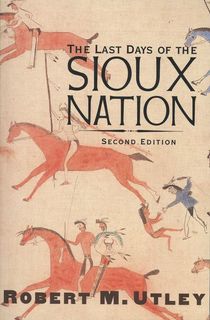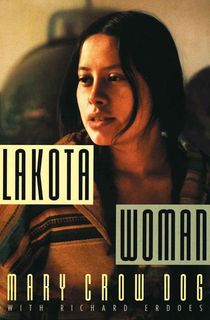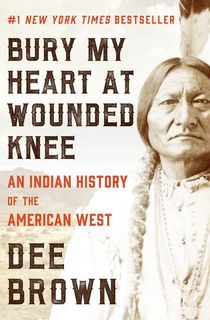By the late 19th century, Native Americans in the West were in a desperate situation. The buffalo, which had been integral to many tribes’ and nations’ survival for generations, had been hunted to near extinction. Decades of violent conflict and war with the United States had forced tribes further and further west and onto reservations. And now, a drought was rendering most of their land infertile. Despite all of this, a glimmer of hope came in an emerging religious movement centered on the Ghost Dance.
Circular dances were commonly practiced among Native Americans for social and healing purposes. The Ghost Dance specifically can trace its origin back to 1869, when Wodziwob, an elder from the Paiute tribe, had a series of visions. He saw the American continent being cleansed of everyone but those who participated in a specific set of spiritual practices, especially a circular dance. With land restored to the Native Americans, their communities would have peace and prosperity once more.
Related: These Native American History Books Shed New Light on the Past and Present
In 1889, 17 years after Wodziwob’s death, a Northern Paiute named Wovoka had a similar vision during a solar eclipse. He saw the descendants of European settlers disappearing, the buffalo returning, the land being restored to Native Americans, and dead ancestors reunited with the living. Since Wovoka had spent part of his childhood being raised by an American Christian family, many of his teachings were influenced by Christianity. His utopian vision of Native groups living peacefully among the spirits, free from European occupation, was similar to the age of paradise that Christians believed would be ushered in by the Second Coming of Christ.

Cheyenne and Arapahoe people perform a Ghost Dance at the Indian Congress of the Trans-Mississippi and International Exposition in 1898.
Photo Credit: Library of CongressWhen word of Wovoka’s prophecy got out, representatives from several tribes came to speak with him and the message soon spread across the West. The Ghost Dance became particularly popular among the Lakota Sioux in the Great Plains states. Stories of the rarely-seen buffalo miraculously appearing near a reservation were proof enough to some, and the practice continued to grow in popularity.
The Ghost Dance involved a group of people forming a circle by holding hands and moving in a clockwise direction to the rhythm of a song. Other specific elements of the dance varied between the tribes who practiced it, as each community added their own customs. The Sioux added elements from their traditional Sun Dance.
Related: The Real Pocahontas Behind Disney's Myth
The dance began with all participants sitting in a circle around a tree that had been cut down and decorated with spiritual offerings. Holy men would stand near the tree and lead a prayer and pass around a sacred drink before the dancers let out a loud cry of sadness. The dancers would then stand and begin to sing without any instruments as they started walking in a circle. The Ghost Dance could go on for hours, with participants only stopping when they collapsed from exhaustion.

The Last Days of the Sioux Nation
By the fall of 1890, the Ghost Dance was popular enough that it attracted the attention of US officials, mostly Indian Agents who monitored the reservations. Most Native American cultural and religious ceremonies, including dances, had been outlawed by the US government several years earlier, but that was only one of the many reasons Americans took issue with the Ghost Dance.
By the late 19th century, the American government wanted the Native American population to assimilate. Many white Americans believed that if Native Americans were “civilized” enough and abandoned their traditional practices, then everyone could live in harmony. This was the height of the Victorian era, so to most Americans, civilized meant restrained, quiet, and Christian. To the federal officials on Sioux reservations, the Ghost Dance, with its rhythmic singing and people collapsing from exhaustion, was none of those things.
Related: 9 Books to Read for Native American Heritage Month
In addition, the fact that the Ghost Dance was so rooted in Native American customs and the desire to return to their traditional way of life was especially disturbing to white Americans. It seemed to them like a rejection of assimilation and an act of rebellion. In fact, that may have been what made it so appealing to many Indigenous people. The dance was a new form of worship, suited to their current situation, that was very connected to their Native American identities and traditions.

Sitting Bull.
Photo Credit: WikipediaThe Ghost Dance was always meant to be a peaceful way to demonstrate resistance to harmful US policies, but that did not stop Americans from interpreting it as a threat. By late fall, government officials were worried enough about the dance that they called for military support. On November 13, 1890, President Benjamin Harrison sent armed troops to the Sioux reservations to snuff out any sparks of uprisings or violence. In total, one-third of the entire US army was sent to Sioux land, making the opposition to the emerging Ghost Dance War the largest military campaign since the end of the Civil War.
The presence of troops put everyone in the region on edge as orders started to go out to arrest Ghost Dancers. On December 15, police arrived at the home of Sitting Bull, the most famous and formidable living Lakota chief, on the Standing Rock Reservation to arrest him on charges of allowing his people to perform the Ghost Dance. As the police started to take Sitting Bull away, one of his followers shot an officer. In the ensuing skirmish, the police shot Sitting Bull in the head and chest, killing him.

Lakota Woman
Word of Sitting Bull’s death spread quickly, and Ghost Dancers from multiple Sioux reservations began to flee. One group of over 300 Miniconjou Lakota men, women, and children led by Chief Spotted Elk, sometimes also known as Big Foot, were on their way to the Pine Ridge Reservation when they were stopped on December 28 by US troops and forced to camp along the bank of Wounded Knee Creek. The soldiers already knew the group harbored suspected Ghost Dancers, and subsequently herded them into a ravine where they could be watched from the hills above.
The next morning, the soldiers began going through the group to confiscate weapons. One man, who was deaf and may not have understood the orders, refused to give up his gun, and in the ensuing struggle, it went off. Even though the shot didn’t hit anyone, the soldiers opened fire into the almost completely unarmed group. The women and children tried to flee, but many were hit by bullets from the machine guns stationed at the top of the hill.
Three days after the event that would come to be known as the Wounded Knee Massacre, the soldiers returned with a burial party. The night of the massacre, a blizzard had set in, and the bodies of the victims, including Spotted Elk himself, were now frozen. Anywhere between 150 and 300 Native Americans were killed at Wounded Knee. Between 25 and 30 American soldiers died.

Bury My Heart at Wounded Knee
In the immediate aftermath, the American government regarded what they called the Battle of Wounded Knee as a victory. Much to the dismay of Native Americans, 20 soldiers were decorated with the Medal of Honor, awarded for acts of valor. The Wounded Knee Massacre largely halted the Ghost Dance practice and the so-called Indian Wars for decades. But the truth is a bit more complicated than that.
The Wounded Knee Massacre continues to be an important symbol of the violence that met Native American resistance. Most famously, it was the site of an occupation by members of the American Indian Movement in 1973. People revived the Ghost Dance and practiced it for several more decades into the early 20th century. Elements of the Ghost Dance persist in the traditions of several Native tribes today.
Sources: PBS, Library of Congress’ Folklife Today, Indian Country Today, History.com
